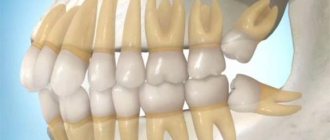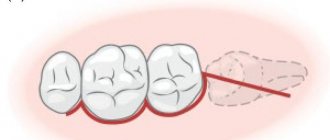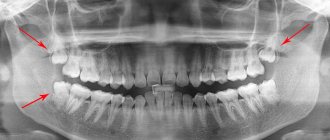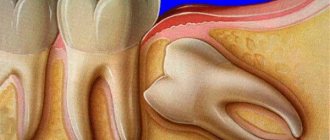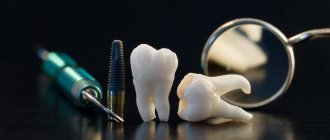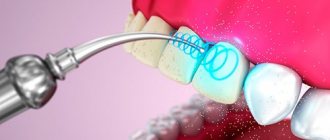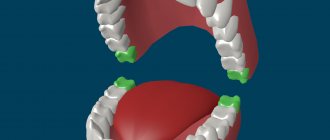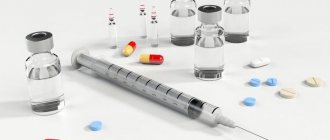Many people are afraid to have their teeth treated. This is a “genetic” fear of residents of the former USSR of outdated equipment and operating technologies that were used in a great, powerful state that was not focused on caring for people. Technologies have changed, “geeth crushing” machines are a thing of the past, anesthesia today allows therapy to be carried out painlessly. But still, citizens prefer dental surgeons to dental therapists. There is no need to sit in a chair for hours with your mouth open, worrying about what manipulations the doctor will perform, whether it will hurt, whether the drill is buzzing loudly. The surgeon gave an injection, your jaw became numb and lost sensitivity, and with a deft movement of his hand the professional doctor deprived you of a tooth. The procedure, including freezing, takes a quarter of an hour. Everything is simple, clear and fast. This means you don’t have to worry about your dental health, don’t comply with hygiene requirements, and don’t have to treat your teeth. It is possible to go to a surgeon and remove at least all the teeth at once. In fact, the question of how many teeth can be removed at one time is quite controversial and ambiguous.
Tooth extraction - features of the procedure
32 teeth in an adult's mouth is a standard that is used in advertising of toothpastes and dental services. Most people never have a full set of teeth throughout their lives. When I was young, my wisdom teeth didn’t come out. When they have successfully erupted, which happens in isolated cases, the remaining teeth deteriorate and have to be removed.
The human dentofacial apparatus is not simple. All teeth are different, all perform different functions.
Table. Names and functions of teeth
| Name | Description and functions |
| Incisors | Frontal teeth, located on the upper and lower jaw in the center, 4 pieces each. They are the first to cut in children. Used for grasping and biting. They have a flat “scapular” shape. |
| Fangs | There are only four of them in the mouth. They grow immediately behind the incisors on the sides. The shape is cone-shaped, pointed. Designed to tear pieces of food captured by the incisors into smaller fragments. The fangs also hold food, sending it further to the chewing teeth. |
| Premolars | They are called small molars or small chewing ones. In fact, the main function of premolars is to hold food and send it even further, feeding it directly onto the large chewing teeth. Located behind the fangs, two on each side above and below - eight in total. |
| Molars | Thanks to them, food is ground and sent to the esophagus in a crushed state and ready for digestion. Ideally, there are 12 of them, but the 4 back ones, wisdom teeth, do not grow in everyone and do not perform chewing functions because they are too deep in the jaw. Large chewing teeth, two on each side above and below, bear the main burden of grinding food. |
The classification of teeth and their structure are important for understanding the features of the extraction procedure.
The number of roots in the teeth of different people is the same, except for wisdom teeth.
- Incisors and canines consist of a crown and one root.
- The first upper premolars have two roots.
- All other premolars have one root, but it can be bifurcated.
- The upper molars have three roots.
- The lower molars are limited by two roots.
- As for the rear molars, the number of roots in them is individual for each person, and can number from two to five.
The number of channels is not equivalent to the number of roots.
- Incisors and canines usually have one canal.
- But the fangs of the lower jaw can also consist of two canals.
- Premolars and molars can have two to four canals.
By the way. The difficulty of tooth extraction directly depends on the number of roots and canals in it, as well as the degree of destruction of the crown.
Upper incisors and canines
The simplest procedure is the extraction of the upper incisors and canines. They do not pull out, but seem to be twisted out of the jaw using straight forceps, with a rotational movement. This allows you to quickly and painlessly have a single cone-shaped root. The patient does not feel how his front tooth is being removed. During the period of a medical appointment, theoretically, it is possible to unscrew at least all the incisors and fangs, if this is necessary, of course, and if the crown is preserved so much that it is easy to grab it with forceps.
Lower incisors
Removing them is also not classified as difficult. The tool used is forceps, curved in the shape of a beak. Since the roots of the incisors from below are flattened on the sides, the tooth is extracted using rocking movements back and forth with elements of twisting, but with a small amplitude.
Lower canines
The forceps are the same as for the lower incisors, only the “beak” is wider. The root of the lower canine is longer than that of the upper one and has a rounded shape. The movements are also made according to the principle of a pendulum, twisting only at the end of the procedure, to completely release the ligaments.
Upper premolars
The presence of two or one bifurcated root determines the use of forceps in the shape of the letter S. The first small chewing teeth from the center are removed using rocking and twisting movements. The second ones, more often having one root, are only twisted.
Lower premolars
Single-rooted, rarely with bifurcation. The root shape is round. The forceps are beak-shaped, like for the lower canines. The tooth comes out quite easily and quickly.
Upper molars
Three roots, which are placed in different directions, make the removal procedure quite complicated. S-shaped forceps are used. Rotation is not used; the tooth can be removed only by rocking in different directions at a large amplitude. This applies to the first and second upper molars.
Lower molars
The first and second large chewing teeth on the lower jaw each have two roots, but they are often curved. S-shaped forceps must be used with caution when removing them. These teeth often split in half when they are extracted. Therefore, the procedure may become more complicated and take longer, and the consequences may be painful.
Third molars
Here the number of roots may vary. The crown often barely sticks out from the gums, making it difficult to grasp. Therefore, special bayonet-shaped forceps are used. Since the roots, in most cases, are fused or intertwined, removal takes a lot of time; twisting and rocking movements are used. Wisdom teeth extraction is the most difficult procedure.
Teeth position
You can remove two teeth at once if both problem teeth are located in close proximity to each other. Sometimes this is even recommended, for example, in such cases:
- Both teeth are located in the same anesthesia zone. During anesthesia for the removal of teeth located on the lower jaw, an anesthesia technique is most often used, which “turns off” sensitivity on the corresponding side. That is, if teeth that are located on one side of the lower jaw are to be removed, they can be removed in one visit to the doctor.
- The teeth are located nearby, and one of them (or both) requires excision of soft tissue. In this case, it makes sense to remove both teeth during one operation - this shortens the duration of the recovery period and reduces the likelihood of developing a number of complications. For example, when only one tooth is removed, the second one, which is also “problematic,” becomes a source of infection or inflammation, which with a high degree of probability can spread to the recently operated area. In such situations, removing both teeth at once minimizes the risks of undesirable consequences.
Wisdom teeth growing abnormally
The “eights,” which are commonly called wisdom teeth, deserve special attention. Often the need to remove them is due to improper growth (partial eruption, sideways growth, etc.). It is characteristic that anomalies in the development of these teeth and disturbances in their growth are usually characteristic of all eights. This means that if one of the teeth begins to grow crookedly, there is a very high probability that the remaining 3 teeth will grow in the same way. The dentist decides how many wisdom teeth can be removed at a time.
But the generally accepted practice is to remove “crooked” or impacted “eights” as the problem arises: as soon as one of the grown teeth begins to show a deviation in growth or position, the tooth should be removed without waiting for the remaining “eights” to erupt.
How teeth are removed
There is nothing complicated about the removal mechanics. Even a dental student can pull out a tooth, as opposed to saving or restoring it. The main thing is to use the right instruments, give precise anesthesia and be able to make the necessary movements.
By the way, if a dentist sends you for extraction, do not be alarmed; this is the professional name for the procedure for removing a tooth from the gums.
But before depriving a patient of a tooth, doctors try their best to preserve it. This is how the generally accepted medical rule works: “Do no harm.”
However, many patients themselves ask to be referred to a surgeon, they say, to pull it out and not suffer. It is not accepted in our society to think that the absence of even a single tooth causes big problems for the masticatory apparatus and digestive tract, leads to the displacement and loss of other teeth, and changes in the shape of the jaw.
Therefore, the question of the number of teeth that a surgeon can remove at one time is extremely relevant among patients of dental clinics.
Tooth extraction occurs in several stages.
- Preparation for anesthesia.
- Preparation of the oral cavity.
- Anesthesia.
- Tooth extraction.
- Post-surgical treatment.
Video - Tooth extraction
The situation when a tooth must be extracted occurs in the following cases.
- It cannot be treated.
- The location is incorrect - the tooth interferes with the growth or functioning of neighboring teeth.
- The tooth injures the oral cavity.
- An inflammatory process has occurred in the oral cavity.
- The tooth is loosened and practically does not stay in the gum due to periodontal damage.
- A situation of injury in an accident where a tooth is damaged.
- Abscess.
- Caries has destroyed the roots and penetrated deep into the dental canals.
When and why is it prohibited to remove more than one tooth?
The procedure will not be performed in cases where the teeth to be removed are on opposite sides of the jaw. It is recommended that they be removed in two visits so that the patient can chew food on one side while the wound on the opposite side heals. It is not recommended to remove several teeth on one side of the jaw, because a large free surface leads to excessive mobility of neighboring teeth. This often occurs when there is potential for significant damage to the gum margin, bone, and excessive blood loss. Multiple extractions often cause swelling and characteristic pain. Occasionally, sutures are placed on the postoperative area. The doctor will strictly prohibit the removal of several teeth at a time if the patient has been diagnosed with: diseases of the cardiovascular system, low blood clotting, high blood pressure. This is because extraction in such cases puts stress on the body. There is also a risk of an allergic reaction to the anesthetic. A person is afraid of feeling severe pain during surgery - this also serves as a very significant factor in the ban on multiple removals. In addition, this type of operation is accompanied by a long rehabilitation period, which for the patient is an additional reason for the ban.
Minimum and maximum
Most professional dentists believe that as many light extractions can be performed at one time as desired. Various anesthetics can effectively numb the area being operated on. In addition to injections, there is a special gel that reduces sensitivity before inserting a needle with anesthesia. The duration of action of the anabolic can be up to two hours, depending on the dose. If an ordinary simple removal takes no more than a quarter of an hour, in one session, which lasts 2-3 hours, it is actually possible to carry out a dozen simple removals without harm to the patient.
But complex extractions last from 40 minutes to three or more hours. Therefore, it is not possible to immediately remove, for example, four wisdom teeth that have grown into the gums and are intertwined with their roots, even in an emergency and when surgeons work with four hands. The anesthesia will have to be injected, which will not have the best effect on the patient’s condition, including psychological.
By the way. Even simple surgery is traumatic. In addition to the possibility of extracting a large number of teeth in a certain time period, it is necessary to take into account the degree of injury and the time of subsequent healing of the cavity.
In addition to the theoretical calculation of possibilities, there are rules and regulations, as well as the conditions of insurance companies that dictate their own rules.
According to the standards that apply to both public and private clinics, if the patient is in good health, age allows, and there are no chronic diseases, up to three light teeth can be removed at one time with a single anesthesia.
If we are talking about a complex extraction, in one visit, according to the norms, the doctor can remove only one tooth. In emergency cases, during repeated anesthesia, you may have another one removed. But this will already be associated with certain risks, including postoperative complications. The healing period will also be long and difficult.
Where do these standards come from, and is it really necessary to comply with them? Many dentists on the forums of specialized websites complain that health insurance companies do not allow the removal of more than 2-3 teeth at the same time. Moreover, this is not even explained by concern for the safety and health of the patient. Dentists joke that insurance companies are apparently afraid that queues at dentists will disappear if surgeons start removing all teeth in one appointment.
Most professional dental surgeons still agree that, if necessary, four complex teeth or more can be removed simultaneously. And the record for easy removals in one go is 18.
As far as concern for the consequences for the patient goes, no one just pulls teeth on a whim. Sometimes there really are cases when it is necessary to carry out extraction of the entire dentition, and urgently. If the risk to the patient’s health or life is higher than the postoperative consequences, doctors undergo such an operation and remove as many teeth as necessary.
Difficulty of the situation
Before tooth extraction, in most cases, an X-ray examination is performed, the purpose of which is to identify difficulties that may arise during the operation. This is especially important in such situations:
- the patient currently has teeth curvature and/or malocclusion;
- the patient underwent orthodontic treatment for malocclusion;
- the patient has crowded teeth (regardless of whether the crowding relates to teeth that need to be removed);
- supernumerary teeth;
- the crown part of the tooth is destroyed by more than 50% by caries or trauma;
- the doctor has reason to believe that there is a fracture of the roots of the tooth that needs to be removed.
Abnormal growth of wisdom teeth
An x-ray (or orthopantomogram - the most modern version of an x-ray) gives an idea of the condition of the roots and the features of their structure.
If the image reveals intertwining of the roots of adjacent teeth or their damage to the extent that there is a high risk of breaking them during surgery, such clinical cases are classified as complex. Accordingly, the removal of more than one tooth during one operation is excluded.
Read also: What can you eat when a tooth is pulled out?
After extraction
- After extraction, a tampon with medicinal impregnation is installed to stop the bleeding. It must be kept for exactly 20 minutes. Then remove it yourself. This will promote the formation of a blood clot, which will prevent the wound from becoming infected.
- It is recommended to eat after two hours. Better liquid or puree, at least for a day. Try not to get into the hole, do not make chewing movements, try to ensure that food remains do not remain in the wound.
- You are allowed to drink the liquid after an hour, but do not manipulate it in your mouth or rinse the wound, so as not to wash away the protective blood clot.
- All drinks and food should be at medium temperature. Hypothermia, as well as overheating, after extraction is very dangerous.
- You are prohibited from drinking alcohol on the day of surgery. You should also not smoke for two hours after removal.
- You can brush your teeth only on the side opposite to the extracted tooth.
If the removal was uncomplicated, a second visit will not be required; the gums will heal in 3-4 days.
In case of complications, if the pain lasts more than a week and the gums do not heal, you need to contact the surgeon again to control the situation and prevent the inflammatory process.
Video - Removing 10 teeth in 3 minutes
How does dental phobia differ from ordinary fear of dental treatment?
A common fear of a drill can always be distinguished from such a serious problem as dental phobia. If a person goes to talk to a doctor, then most likely he is simply afraid. In this case, my task as a specialist is to find an approach to the patient, to choose the right words. When a person realizes that there is nothing to be afraid of, he relaxes and may even fall asleep during the appointment. This happens only because he found contact with the doctor and trusted him. A patient suffering from dental phobia is non-communicative, he can faint only at the sight of a syringe, during the treatment he begins to interfere with the doctor with his hands or feet, he develops shortness of breath, his blood pressure rises sharply... In such situations, it becomes obvious that the person is really not able to control your fear, and this is a serious psychological problem.
Many clinics offer patients with dental phobia dental treatment under anesthesia. How do they cope with such problems at the Sanabilis center?
We treat patients who suffer from dental phobia under sedation - this is, in fact, a light medicated sleep. Under the influence of a special drug, a person gradually calms down and falls asleep, and wakes up with already cured teeth. This is also a great option for those who are simply afraid of dental treatment. But, in addition to the fear of the dentist’s intervention, there are a number of very important indications for sedation. These are allergies to local anesthetics, which are now very common, cardiovascular diseases, hypertension, a recent heart attack, epilepsy... Sedation allows you to mitigate the risks that may arise during the treatment process associated with these serious diseases. The use of anesthesia or general anesthesia is allowed in dentistry, but only in cases where it is really necessary.
What is the difference between sedation and anesthesia?
Sedation is simply a sleeping pill that puts the patient into a shallow sleep. At the same time, he breathes on his own, he retains all vital reflexes, he can respond to the doctor’s requests, and after the procedure he can calmly go home. Anesthesia is more global. The patient is put into deep sleep, undergoes mandatory intubation, and during the treatment, his breathing and cardiovascular activity are supported and controlled by devices. After recovering from anesthesia, he must be under the supervision of a doctor for at least 30 minutes, and to return home he must be accompanied by someone close to him. Therefore, use general anesthesia only because the patient is afraid. In addition, there are sad statistics according to which, after dental treatment under anesthesia, fear not only does not go away, but intensifies even more.
Can all treatments be performed under sedation?
Almost everything, but the question here is expediency. It is reasonable to use sedation during global long-term treatment, lasting more than 3-5 hours, when it is simply uncomfortable for the patient to lie with his mouth open. It is also used in cases of implantation or sinus lift, where it is important to reduce excessive patient activity for safety reasons. In addition, we use sedation in the treatment of children under 3 years of age diagnosed with bottle caries, when it is necessary to treat 6 - 8 teeth.
How many teeth can be treated in one visit?
There are no restrictions on volume, the main thing is that it takes a maximum of 6 hours. But if you plan to treat several teeth in a row, then dentists usually do not undertake to do everything in one visit: after treatment, post-filling pain may occur, in which case the doctor will not be able to determine which tooth is bothering the patient. But there is another side to the issue. In order to avoid putting a person into a state of sedation once again, sometimes it makes sense to take a risk and do everything to the maximum.
Is it true that more medical errors occur during dental treatment under anesthesia or sedation than during conventional treatment under local anesthesia?
It all depends on the professionalism of the doctor and anesthesiologist. There are sort of two camps here: the anesthesiologist must quickly put the patient into a state of sedation or anesthesia and quickly remove it from it, and the dentist needs to have time to do everything necessary during this time. If the team is well-coordinated, and before the procedure the patient is properly interviewed, fully examined, and planned what they will do, then errors are minimized. We already have legal proceedings, as is customary in America and Europe. A doctor is unlikely to risk his job, position, diploma just to do something wrong while the patient is sleeping.
Is it harmful to have dental treatment using sedation? How often can this be done?
Until now, many patients and even doctors are afraid of everything that is in one way or another connected with anesthesia, because previously heavy drugs with a lot of side effects were used for this. But since then, everything has changed dramatically: a huge amount of research has been carried out, many new medicines have been released. Today, anesthesiologists use the latest generation of drugs that have virtually no side effects; their contraindications are limited to the third and first trimester of pregnancy, lactation, as well as banal intolerance, which can even occur with aspirin.
How is sedation performed at Sanabilis? What drugs are used for this?
At Sanabilis, we use intravenous sedation, which is more convenient and safer. Throughout the procedure, the patient's pulse and blood pressure are monitored by an anesthesiologist-resuscitator. It also controls the depth of sedation: at the right time it prolongs its effect. The drug we use has sedative, muscle relaxant, and anticonvulsant pharmacological properties. Its advantage is that it has an antidote that stops or weakens the effect of the drug on the body. After its administration, the patient immediately wakes up and feels great. Perhaps a little sleepy for an hour, but nothing more.
Do patients who are afraid of dental treatment always need sedation?
Of course not! Sedation is not a panacea in the fight against fear, it is simply an emergency measure. It very effectively helps to level it out or get rid of it altogether. The fact is that the big advantage of sedation is the absence of memories. The man remembers sitting in the chair, but nothing more. This means that even if there was discomfort during treatment, no unpleasant emotions will remain. It turns out that after having his teeth treated several times under sedation, a person understands that nothing bad is happening to him, and before his next visit to the dentist he no longer experiences such strong fear as before. At this point, I suggest trying treatment without sedation and, as a rule, the patient agrees. At first, of course, he may remain tense, but then a feeling of relaxation sets in, and I understand that the problem has been solved.
Should a dentist use sedation just because the patient wants it?
Dental treatment under sedation should only be done when it is really necessary. Any specialist, before starting treatment, must always weigh the risks: if the patient needs additional pain relief in addition to local anesthesia, and this does not threaten health, then the doctor will do it.
Unfortunately, a diseased tooth cannot always be cured. Many patients, usually due to fear of the dental office, constantly postpone a visit to the doctor and thereby trigger the destructive processes occurring in the dental tissues to such an extent that it becomes impossible to save the tooth. turns into pulpitis, which, if untreated, over time develops into periodontitis, the complications of which are granulomas, fistulas, cysts, or, more seriously, . With all these pathologies, tooth extraction is sometimes the only correct solution.
Bleeding from the socket can appear either immediately after extraction or after some time. The causes of their occurrence can be both local (physical trauma, inflammatory processes) and general (hypertension, blood diseases, a number of infectious diseases). To eliminate bleeding, stitches are placed on the gums, blood vessels are tightened and hemostatic agents are used. The patient must adhere to standard procedures to avoid complications.
Paresthesia is injury to the nerves during extraction. This problem manifests itself as numbness of the tongue, lips, cheeks and chin. Usually this condition goes away within a maximum of two days. In some cases, vitamin therapy and injections of galantamine and dibazole are required.
Changing the angle of inclination of the teeth located next to the socket leads to disruption of the chewing function, distortion of the bite, and disruption of the natural distribution of the load. All this can provoke the development of periodontal disease. Therefore, after extraction, it is necessary to install a prosthesis in place of the extracted tooth as soon as possible.
Perforation of the bottom of the maxillary cavity occurs due to the specific anatomy of the patient and in the presence of chronic inflammation, leading to a decrease in the thickness of the bony septum between the nose and oral cavity. This problem can arise when extracting the upper chewing teeth. When a communication is formed between the oral and maxillary cavities, water and food products will enter the sinus, which will lead to the development of an inflammatory process. Therefore, the resulting passage must be urgently eliminated.
Injuries during extraction
During tooth extraction, the patient may suffer the following injuries:
- Injury to nearby teeth.
- Fracture of the tooth being removed - the result is a complication of the operation and the risk of further complications.
- Incomplete tooth extraction – when a fragment of the tooth root remains in the jaw, which can provoke the development of an inflammatory process.
- – Elderly patients are at greatest risk of such injury.
- Tearing out a piece of the alveolar process - in this case, artificial restoration of the bone is required.
How soon can the next tooth be removed?
In addition, when pulling out diseased baby teeth in children, the doctor may mistakenly remove the germ of a permanent tooth, mistaking it for the root of a baby tooth.
How many teeth can be removed in one visit?
Tooth removal or extraction involves the following steps:
- Examination of the condition of the masticatory organ for indications for removal.
- Local anesthesia by injection of anesthetic.
- Preparing the oral cavity for surgery.
- The actual tooth extraction.
- Treatment of the hole remaining in place of the tooth.
There are two types of extractions practiced in dentistry: planned and emergency.
How many teeth can be removed in one visit?
Planned tooth extraction is usually prescribed in the following cases:
- if it is impossible to cure a diseased tooth - for example, with chronic periodontitis with complications in the form of granuloma, fistula or cyst;
- in case of pathologies of tooth growth that have caused its incorrect location, as a result of which the tooth begins to interfere with surrounding teeth or injure the oral cavity.
Emergency extraction is prescribed in the event of the development of acute inflammatory processes on the tooth root, periosteum or jawbone. Indications for emergency tooth extraction are:
- acute purulent periodontitis - inflammation of the tissues surrounding the root;
- acute periostitis or flux - a purulent inflammatory process in the periosteum adjacent to the diseased tooth;
- acute jaw osteomyelitis – inflammation of bone tissue, accompanied by bone destruction.
If there are signs of periostitis such as acute throbbing toothache, swelling and fever, you should immediately consult a doctor without making any attempts to solve the problem on your own by rinsing or warming up. Rinsing will not give the desired result, and heating can only significantly worsen the situation. If periostitis has turned into an abscess, externally manifested by severe swelling of part of the face, then there is practically no chance of saving the tooth.
The use of modern painkillers makes the procedure of tooth extraction almost painless. In some cases, anesthesia is performed in two stages. First, a gel is applied to the surface of the gums to reduce the pain of the injection. After this, an injection of the main anesthetic is performed.
Extraction can have varying levels of difficulty. The most difficult operations are to remove extra teeth, especially if they remain unerupted, teeth with pathologies of growth and location, teeth whose roots are intertwined. The procedure for extracting a broken tooth is also considered difficult.
The duration of extraction is determined by the complexity of the operation. In the simplest cases, the operation usually lasts no more than a quarter of an hour. In difficult cases, extraction can last several hours.
When can you remove two teeth at once?
Regardless of the level of complexity, extraction is a surgical procedure that injures the tissues of the oral cavity. Tooth extraction requires the proper professional level from the dentist, since carelessness during the operation and various medical errors can lead to complications. Due to the traumatic nature of the operation and the risk of complications, there are restrictions on the number of teeth removed at one time. After tooth extraction, a period of tissue healing follows, the duration of which is determined by the degree of damage, the individual characteristics of the patient’s body, the state of his immune system, and so on. If several teeth are pulled out at once, it will take longer for the tissue to recover. The risk of developing postoperative complications also increases.
You can remove two teeth at once
So, to what extent is it acceptable to remove several teeth at once? The possibility of simultaneous removal of more than one tooth is determined individually for each patient. The following factors are taken into account:
- the general health of the patient;
- a list of medications taken by the patient;
- level of anesthesia with the maximum permissible amount of anesthetic;
- patient tolerance to analgesics;
- complexity of the extraction procedure;
- the desire of the patient himself.
Removing several teeth is highly undesirable if the patient is taking drugs that suppress the formation of blood clots. In this case, there is a risk of heavy bleeding in the oral cavity.
If the patient has a sufficiently strong immune system and does not have various pathologies that slow down and complicate the wound healing process, it is permissible to remove a maximum of two teeth during one visit to the dentist. In children, it is permissible to remove three baby teeth in a row - if the teeth have already lost their stability.
If the extraction was simple, went without complications and the patient has no problems with tissue restoration, then healing of the gums after surgery lasts no more than seven days.
How long before the next tooth can be removed?
The duration of the time interval between the removal of two teeth is determined by the doctor individually for each case. The length of the break between tooth extractions is influenced by factors such as:
- dynamics of tissue restoration process;
- presence of complications after extraction;
- general condition of the patient's body.
When is it recommended to remove several teeth at once?
Although removing more than one tooth is generally undesirable, in some cases the doctor will recommend removing two or more teeth. These include:
- advanced inflammatory processes - when several teeth at once are sources of infectious infection;
- periodontal disease with severe loss of tooth stability;
- when the teeth are located on the bone fracture line during a jaw fracture;
- for such injuries when the roots of several teeth are cracked or broken.
What is required from the patient to prevent complications after extraction
After the tooth is pulled out, the dentist places a tampon soaked in a drug into the hole that stops the bleeding and speeds up the healing of the wound. The patient should spit it out after twenty minutes. Drinking is permissible one hour after removing the tampon, and eating at least two hours after extraction.
Hard, hard and hot foods are extremely undesirable on the day of extraction, as they can injure already damaged tissues. It is best to consume only liquid and soft foods. Also, on the day of tooth extraction, you should not drink alcohol or smoke.
To avoid accidentally washing away a blood clot covering the wound, you should not rinse your mouth on the day of surgery. Instead, it is better to use baths made from chlorhexidine solution.
After surgery, you can, but you should not touch the brush to the side where the tooth was pulled out.
If the operation was not complicated, then the patient does not have to see the doctor on the second day of the postoperative period. In a complex case, the doctor himself tells the patient when he should come to him for examination.
Before starting dental treatment, you need to find out from the dentist under what conditions it is possible and under what conditions it is impossible to carry out any surgical manipulations in the oral cavity. What are these conditions? When should teeth not be treated?
Recommendations after surgery
Postoperative recommendations are also similar to those that must be followed when removing one tooth. One of the few differences is the possible use of general or combined anesthesia during surgery. In this case, it is not advisable to drive vehicles or engage in other activities that require quick reactions.
Some pain and swelling is normal, but recovery will be faster if you follow these little tips:
- Immediately after surgery - only liquid food. Anesthesia may remain in effect for some time after the operation, so chewing movements during this period are guaranteed to damage the cheek or tongue. Subsequently, gradually add soft foods. No spicy or hot food.
- You shouldn't train hard right away.
- Smooth jaw movements will help relieve muscle spasms.
- The day after surgery, use warm salt water rinses.
Photo: rinsing with a solution of warm salt water
- To completely stop light bleeding, bite a tea bag. Tannins will help the blood clot faster.
- If removal took a long time and your lips are dry and cracked, lubricate them with moisturizer.
- Always follow your dentist's instructions.
By following these recommendations, removing several teeth at a time will not inspire fear, and your recovery will be smooth and without complications.
What diseases cannot be treated for teeth?
Teeth cannot be treated during ARVI. The body is weakened by microbes and infections. The risk of infection of open wounds, which increases during dental and surgical procedures, is already very high. Anesthetics and painkillers have a negative effect on a weakened body. It will also be uncomfortable for the patient to sit for a long time with his mouth open when he has a runny nose. You can also infect your doctor.
An extremely undesirable procedure for ARVI is tooth extraction. An open wound is the best place for pathogenic microorganisms.
Important: This is additional stress for a person, which can aggravate the course of the disease.
But ARVI is not an absolute contraindication to dental treatment. If the situation is urgent and there is a risk of developing flux or purulent inflammation, it is better to consult a doctor. In other situations, it is better to treat the cold first.
Cold on the lips
If herpes has worsened, oral treatment should be carried out only in emergency cases. Treatment of caries, pulpitis, periodontitis, tooth extraction are strict contraindications for diseases.
Treatment involves certain mechanical intervention. The herpes virus easily enters the bloodstream and causes herpetic stomatitis, and ulcers will appear in the oral cavity. The most dangerous phase for infection is the rupture of the bubbles.
The appearance of acute herpes indicates weak immunity. Low immunity has a bad effect on the condition of teeth. If relapses of herpes are frequent, you need to contact an immunologist and do not forget about preventive visits to the dentist.
Interesting: 90% of the planet's inhabitants are infected with the herpes simplex virus type 1.
Wisdom tooth extraction: features of anesthesia
Most often, anesthesia is used for surgical removal of impacted eights. This is due to the fact that there are many nerve endings near the wisdom teeth and the excision procedure is very painful for the patient and difficult for the attending physician.
A drill is used, deep incisions are made in the gums and, accordingly, at the end of the operation the wound is sutured.
This differs from the standard procedure in the waiting time for the anesthetic to take effect – it is 10 minutes longer than normal.
Reference! The postoperative period is accompanied by a course of antibiotic drugs and regular visits to the attending physician.
Treatment during pregnancy
Dental problems are a common problem among pregnant women due to hormonal changes. We must try not to bring the condition of the oral cavity to the point of requiring serious treatment. Vitamins prescribed by doctors in the early stages of pregnancy will help with this.
A pregnant woman should see a dentist if the following symptoms appear:
- Bleeding gums when brushing teeth and eating.
- Increased tooth sensitivity.
- Toothaches, periodic or constant.
These are signs of incipient inflammation and should be treated, especially during pregnancy. If you start, you will have to do much more painful manipulations. Without anesthesia. Pregnant women are allowed to have fillings. They are not dangerous to the health of the unborn baby.
During pregnancy you can treat:
- Caries at an early stage.
- Periodontitis, pulpitis.
- Periostitis.
- Periodontal disease.
- Gingivitis.
- Stomatitis.
Important: It is better to avoid dental intervention in the first and third trimesters. In the first, the formation of the child’s organs and systems occurs, in the third, the excitability of the uterus increases. Any irritants can cause miscarriage or premature birth. The second trimester is the safest for dental treatment. But first you should consult with your obstetrician-gynecologist.
The following procedures should not be performed during pregnancy:
- Whitening and strengthening.
- Removing stones.
- Correction of teeth or bite position.
- Removal of wisdom teeth.
Is it possible to use anesthesia for a pregnant woman during dental treatment? It is possible if the doctor prefers local anesthetics. They are hypoallergenic and the body tolerates them well. They do not penetrate the placental barrier and do not harm the fetus. Anesthesia with a high content of adrenaline should not be used. Lidocaine lowers blood pressure, causes seizures and other side effects. Stopangin causes fetal pathologies and provokes post-maturity. Sodium fluoride disrupts the functioning of the heart and negatively affects the health of the unborn child. Surgery is performed only for urgent indications.
- For pulpitis or periodontitis, it is better to start treatment as early as possible.
- In the second half of pregnancy, you need to undergo a routine dental examination.
- In the third trimester, teeth should be treated carefully. Stressful situations should not be allowed.
- Before visiting the dentist, you must inform the doctor about your situation.
Complicated caries, periodontitis, pulpitis, stomatitis can negatively affect the development of the fetus:
- Provoke premature birth.
- Low body weight.
- The infection spreads and affects the soft tissues of the fetus, which can lead to miscarriage.
Removal of 2 or more wisdom teeth
Wisdom teeth are the outer teeth in a row, they are also third molars or eights, and have no milk analogues. They owe their name to the fact that they appear later than others, in adulthood. The eruption of figure eights is accompanied by inflammation and severe pain, which can lead to the formation of a cyst. Due to lack of space, they grow incorrectly, injuring the cheek, gum tissue and adjacent tooth, causing caries. If third molars are causing problems, they need to be removed.
Removal of wisdom teeth is a difficult case, as they have deep, branched roots and are located in hard-to-reach places. Removal of 2, 3 and all 4 wisdom teeth in one visit can be performed under general anesthesia, which provides:
- sufficient time to perform a large volume of manipulations;
- complete absence of pain and stress for the patient during surgery;
- absence of numbness of tissue areas that occurs after local anesthesia;
- minimizing the risk of complications after the procedure.
Other conditions in which dental treatment is dangerous
You should delay visiting the dentist if chronic diseases of the liver, kidneys, pancreas, or mental illnesses worsen. Sometimes with scarlet fever, tuberculosis, syphilis and various fungal infections, the oral mucosa is affected. In such cases, the tooth should not be removed. A tooth cannot be pulled out even after a recent heart attack.
It is better not to go for dental treatment under anesthesia if you have recently consumed alcohol. The specialist will not guarantee painless treatment. Even with strong anesthetics.
Indications for multiple removal
As with regular removal, there are a number of indications and contraindications for surgery with multiple removal. Indications for removal:
- Extensive caries;
- Severe periodontal damage and similar diseases;
- Polydontia;
- Impacted teeth
- Mechanical injury;
- Incorrect positioning, which causes injury to the soft tissues of the mouth;
- When performing prosthetics;
- Radiation therapy for tumors in the oral cavity;
- Removal for aesthetic purposes
- Removal for economic reasons
How to overcome the fear of dental treatment - video
Could you ever imagine that you could get all your teeth back in one day? Many people still don’t believe this, but such operations are performed every day in our network of clinics.
Dental restoration is carried out using modern all on 4 technology. This complex operation of installing a prosthesis on four implants allows you to make teeth in one day. The patient comes in on the weekend – and on Monday he’s already smiling broadly!
The last word in dentistry
In Europe, dental implantation in 1 day has already become a common practice, and many doctors are no longer resorting to classical implantation. Our doctors talk about this, who annually attend training courses and practices up to 12 times in countries such as the USA, Israel, Portugal and others, where medicine is developing many times faster. Now almost every second pensioner in Europe walks with fixed dentures using the All-on-4 method.
Considering the advantages of this fixed prosthetics, this is not surprising. A prosthesis on four implants can be installed even without bone grafting (due to implants installed into the bone at 45 degrees). The method has almost no contraindications - it is used even for diabetes and very old age (over 80-90 years). The time to get a smile is just one day, instead of several months using other technologies.
Innovative prosthetic technology in Russia
The problem is that dental restoration treatment is very expensive in Europe. An operation on just one jaw there costs from 1.3 million rubles. That's why our network of clinics came into being. We have promoted this technology to the Russian market and set an affordable price for it. But the main task was to train doctors to perform these complex operations at a level comparable to Europe. For this purpose, we have organized numerous courses and joint operations, conducted under the supervision of experienced dentists who trained with the creators of the technology in Portugal.
Now the best clinics in Moscow, St. Petersburg and other large Russian cities have joined the network. In each of them, high requirements for the quality of operations are met, uniform prices for services are observed, and joint information support is provided.
You can get new teeth in 1 day by contacting our Single Contact Center for a consultation. They will tell you in detail how the operation goes, which dental implantation system you should choose in 1 day, and will offer options for different budgets.
How does tooth extraction occur under anesthesia?
First of all, the doctor injects the patient with an anesthetic, after which he falls asleep. The duration of anesthesia depends on how long and complex the operation is.
A typical tooth extraction takes no more than 30 minutes. Complex operations, such as excision of an unerupted wisdom tooth from the gum, take several hours, especially if inflammatory processes are present.
Upon completion of the operation, the patient comes to his senses, and when he returns to normal health, he leaves the clinic.
Is it possible to remove several teeth at once?
Posted in category: Tooth extraction
Teeth are one of the most fragile organs of our body. They require attention and constant care: you need to visit the dentist every six months to sanitize the oral cavity, change your toothbrush every 3 months and make sure that you have proper personal hygiene techniques. These simple manipulations will help you keep them healthy. After all, as the popular joke goes, “a person is given teeth 2 times for free, but for 3 times you have to pay” and, unfortunately, paying is not cheap.
But, if you have already missed the period when the disease could have been prevented and you are facing extraction, we will tell you whether it is possible to remove two or more teeth at once in one visit.
Removal of several teeth
Removal, even atraumatic, is stressful for the body, especially if it concerns the eighth or so-called wisdom teeth. Therefore, it is up to you to decide whether it is possible to remove two of your teeth at once. If you think that your body can handle it, then after consulting a doctor, you can safely go ahead with removal. The doctor will explain all the difficulties to you and suggest the correct anesthesia. It should be understood that to remove 2 teeth at once, analgesia at the level of the stem structures will be required with more powerful anesthetics. This will cause stronger, longer-lasting numbness, up to several hours.
Another nuance is that with multiple removals, especially of wisdom teeth, the use of groups of drugs may become necessary. Broad-spectrum antibiotics are most often prescribed. This is due to the fact that any operation is stressful, stress leads to a decrease in immune reactivity, which, in turn, leads to inflammatory diseases of the oral cavity, which are sometimes very difficult to treat. If the use of antibiotics is indicated, then the use of probiotics will be mandatory, which will prevent the development of diarrhea and dysbiosis. In addition to antibiotics, you can take immunomodulators that will restore and stimulate your immunity.
If the prospect of a longer rehabilitation and the need to take medications does not frighten you, then you can safely go for the removal of two teeth at once, even wisdom.
The problem of medical errors in dental treatment without pain
Many experts argue that when treating teeth under sedation or anesthesia, the likelihood of medical error is greater than when using local anesthesia. It all depends on the professionalism of the doctor and anesthesiologist. The latter must quickly put the patient into a state of sedation or anesthesia and quickly remove it from it, and the dentist must have time to do everything necessary during this time. If the team is well-coordinated, and before the procedure the patient is properly interviewed, fully examined, and planned what they will do, then errors are minimized. We already have legal proceedings, as is customary in America and Europe. A doctor is unlikely to risk his job, position, diploma just to do something wrong while the patient is sleeping.
Do patients who are afraid of dental treatment always need sedation?
Sedation is not a panacea in the fight against fear, it is simply an emergency measure. It very effectively helps to level it out or get rid of it altogether. The fact is that the big advantage of sedation is the absence of memories. The man remembers sitting in the chair, but nothing more. This means that even if there was discomfort during treatment, no unpleasant emotions will remain. It turns out that after having his teeth treated several times under sedation, a person understands that nothing bad is happening to him, and before his next visit to the dentist he no longer experiences such strong fear as before, which means he can try treatment without sedation. At first, of course, the patient may remain tense, but then a feeling of relaxation sets in.

